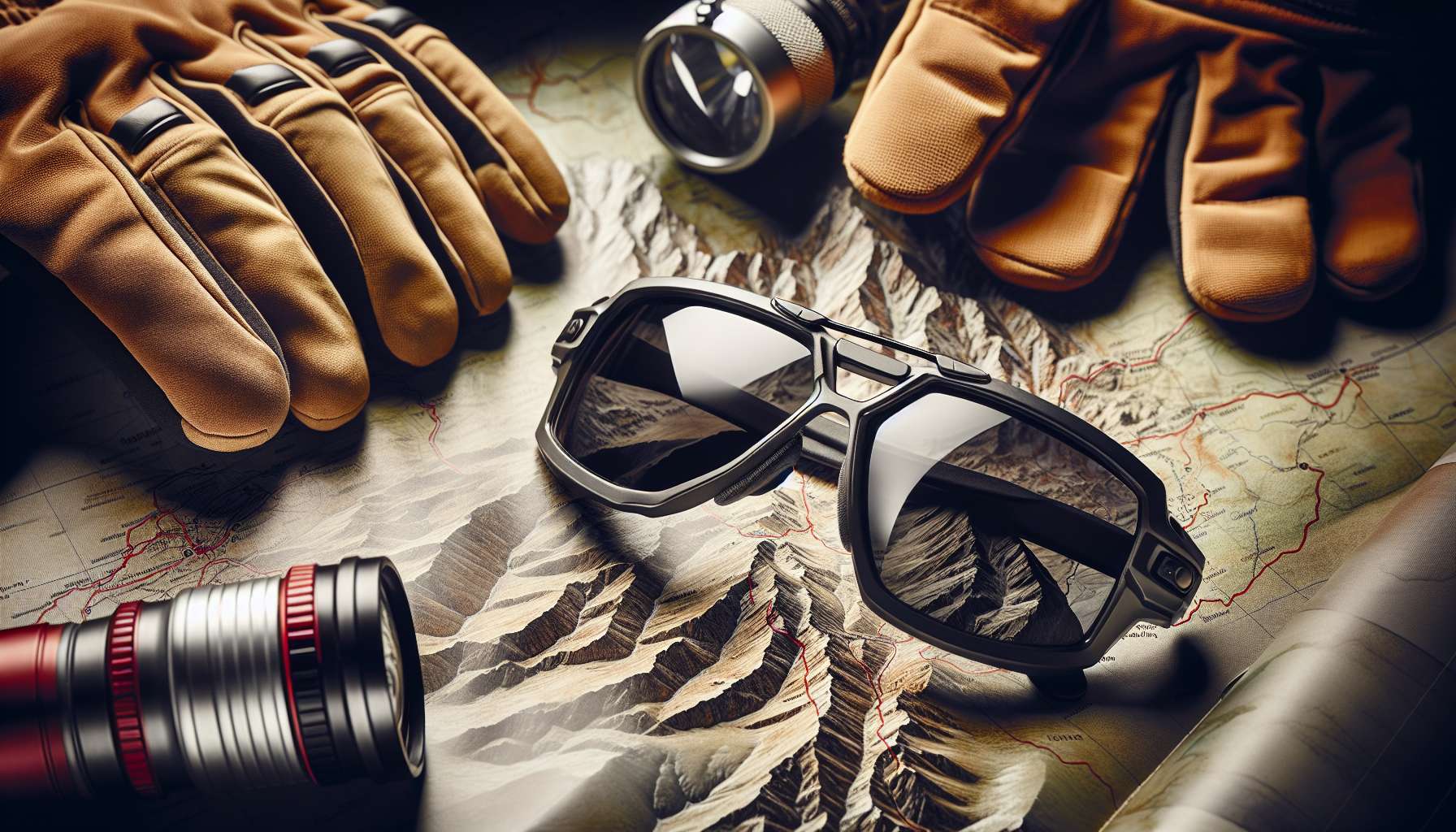Avalanche Airbags: A Comprehensive Guide to Life-Saving Technology
Imagine being in the midst of a breathtaking adventure in the snowy wilderness, surrounded by pristine landscapes and the thrill of skiing or snowboarding. However, there is always the looming risk of avalanches, a danger that poses a serious threat to anyone exploring the backcountry. This is where avalanche airbags come into play innovative devices designed to increase the chances of survival in the event of an avalanche. In this comprehensive guide, we will delve into the world of avalanche airbags, exploring their history, functionality, effectiveness, and the future of this life-saving technology.
The Evolution of Avalanche Airbags
Avalanche airbags have come a long way since their inception, with a rich history rooted in the need for enhanced safety measures in avalanche-prone regions. The concept of using airbags as a means of protection against avalanches can be traced back to the late 1960s when Swiss mountaineer Armand Scheidegger first experimented with the idea. Scheidegger’s pioneering work laid the foundation for the development of modern avalanche airbags, which have undergone significant advancements over the years.
One of the key milestones in the evolution of avalanche airbags was the introduction of compressed air technology, which allows the bag to inflate rapidly when triggered. This innovation revolutionized the effectiveness of avalanche airbags, providing users with an extra layer of protection in the event of an avalanche. Today, avalanche airbags are equipped with sophisticated features such as multiple deployment options, built-in safety mechanisms, and ergonomic designs to ensure optimal performance and user comfort.
How Avalanche Airbags Work
Understanding the mechanics behind avalanche airbags is crucial to appreciating their life-saving potential. Avalanche airbags operate on the principle of inverse segregation, also known as the “Brazil Nut Effect”, where larger particles rise to the surface when subjected to mechanical agitation. In the case of an avalanche, the snowpack undergoes rapid movement, causing the snow layers to separate based on particle size and density. This phenomenon creates a void of larger particles near the surface, which is where the inflated airbag can help keep the user afloat.
When triggered, avalanche airbags inflate within seconds, forming a protective barrier around the user’s head and upper body. The inflated airbag increases the individual’s volume and reduces their density, allowing them to rise to the surface of the avalanche instead of being buried deep within the snowpack. This crucial buoyancy effect enhances the chances of survival by minimizing the risk of asphyxiation and trauma associated with being buried in an avalanche.
The Effectiveness of Avalanche Airbags
Multiple studies and real-life scenarios have demonstrated the life-saving effectiveness of avalanche airbags in mitigating the risks associated with avalanches. Research conducted by leading avalanche safety organizations, such as the Swiss Federal Institute for Snow and Avalanche Research (SLF), has shown that wearing an avalanche airbag significantly increases the chances of survival in avalanche incidents.
One notable case study that highlights the effectiveness of avalanche airbags is the analysis of avalanche accidents in the Alps. According to data collected by the SLF, individuals wearing avalanche airbags had a higher survival rate and were more likely to remain on the avalanche surface compared to those without airbags. This stark contrast underscores the critical role that avalanche airbags play in enhancing safety and reducing the severity of injuries in avalanche emergencies.
Types of Avalanche Airbags
There are two main types of avalanche airbags available on the market: backpack-style airbags and integrated airbag systems. Backpack-style airbags are designed as standalone units that can be worn over regular backpacks or attached to specialized harness systems. These airbags offer versatility and convenience, allowing users to customize their gear setup based on personal preferences and activities.
In contrast, integrated airbag systems are built into specific backpacks or clothing, providing a streamlined and integrated solution for avalanche safety. These systems offer a seamless user experience by incorporating the airbag technology directly into the design of the backpack or garment. Integrated airbag systems are favored by professional skiers, snowboarders, and mountaineers who prioritize efficiency and performance in their gear choices.
Future Trends in Avalanche Airbag Technology
As technology continues to advance, the future of avalanche airbags holds promising developments that aim to enhance user safety and usability. One of the emerging trends in avalanche airbag technology is the integration of smart features and connectivity options, such as GPS tracking, wireless communication, and companion apps. These innovations enable users to stay connected, share real-time data, and facilitate rescue operations in the event of an avalanche.
Furthermore, ongoing research and development in materials science and engineering are driving improvements in the durability, weight, and inflation speed of avalanche airbags. Lightweight and compact designs are becoming increasingly popular among outdoor enthusiasts, offering enhanced mobility and comfort without compromising on safety. Additionally, advancements in sensor technology and artificial intelligence are poised to revolutionize avalanche detection and prevention systems, further bolstering the effectiveness of avalanche airbags in emergency situations.
Expert Opinions on Avalanche Airbags
To gain additional insights into the efficacy and impact of avalanche airbags, we reached out to experts in the field of avalanche safety and backcountry skiing. Dr. Emily Davis, a renowned avalanche researcher and safety instructor, emphasized the importance of education and training in conjunction with using avalanche airbags.
“Avalanche airbags are valuable tools for enhancing safety in avalanche terrain, but they should not be seen as a substitute for proper training and decision-making skills,” Dr. Davis stated. “Users must understand the limitations of avalanche airbags and be equipped with the necessary knowledge to make informed choices in the backcountry.”
Common Misconceptions About Avalanche Airbags
Despite their proven effectiveness, there are several common misconceptions surrounding avalanche airbags that warrant clarification. One prevalent myth is that wearing an avalanche airbag guarantees survival in an avalanche, which is not always the case. While avalanche airbags can increase the chances of survival, they do not eliminate all risks associated with avalanches.
Another misconception is that avalanche airbags are only necessary for experienced backcountry enthusiasts, overlooking the fact that avalanches can occur in a variety of terrains and snow conditions. It is essential for all individuals venturing into avalanche-prone areas to equip themselves with the appropriate safety gear, including avalanche airbags, regardless of their skill level or experience.
Comparative Analysis of Avalanche Airbag Brands
When choosing an avalanche airbag, it is important to consider the features, performance, and reliability offered by different brands in the market. Several leading manufacturers specialize in producing high-quality avalanche airbags, each with unique strengths and innovations. Brands such as Mammut, Ortovox, and Arc’teryx are renowned for their commitment to safety, design, and functionality in avalanche airbag technology.
By conducting a comparative analysis of avalanche airbag brands, users can make informed decisions based on their specific needs and preferences. Factors to consider include deployment mechanisms, volume capacity, weight, fit, and additional features such as helmet compatibility and hydration system integration. Ultimately, choosing the right avalanche airbag brand is a personal decision that should prioritize safety, comfort, and performance in the backcountry.
FAQs About Avalanche Airbags
Q: How do I properly maintain and store my avalanche airbag?
A: It is essential to follow the manufacturer’s guidelines for maintenance and storage of your avalanche airbag. Regularly inspect the airbag for wear and tear, clean it as recommended, and store it in a cool, dry place away from direct sunlight and moisture.
Q: Can avalanche airbags be reused after deployment?
A: Most avalanche airbags are designed for single-use deployment and require rearming by an authorized service center after activation. It is crucial to follow the manufacturer’s instructions for rearming and servicing your avalanche airbag to ensure its functionality in case of an emergency.
To Wrap Things Up
As we conclude our exploration of avalanche airbags, it is evident that these life-saving devices play a crucial role in enhancing safety and survival in avalanche emergencies. The evolution of avalanche airbag technology, coupled with ongoing advancements and innovations, underscores the significance of investing in proper safety gear for backcountry adventures.
Whether you are a seasoned backcountry enthusiast or a novice adventurer, understanding the importance of avalanche airbags and incorporating them into your safety repertoire is a vital step towards responsible and informed exploration. In the unpredictable wilderness of the mountains, avalanche airbags serve as a beacon of hope and protection, offering a lifeline in the face of nature’s powerful forces.
Stay safe, stay informed, and embrace the thrill of the backcountry with confidence, knowing that you are equipped with the knowledge and tools to navigate the snowy landscapes with resilience and preparedness.




